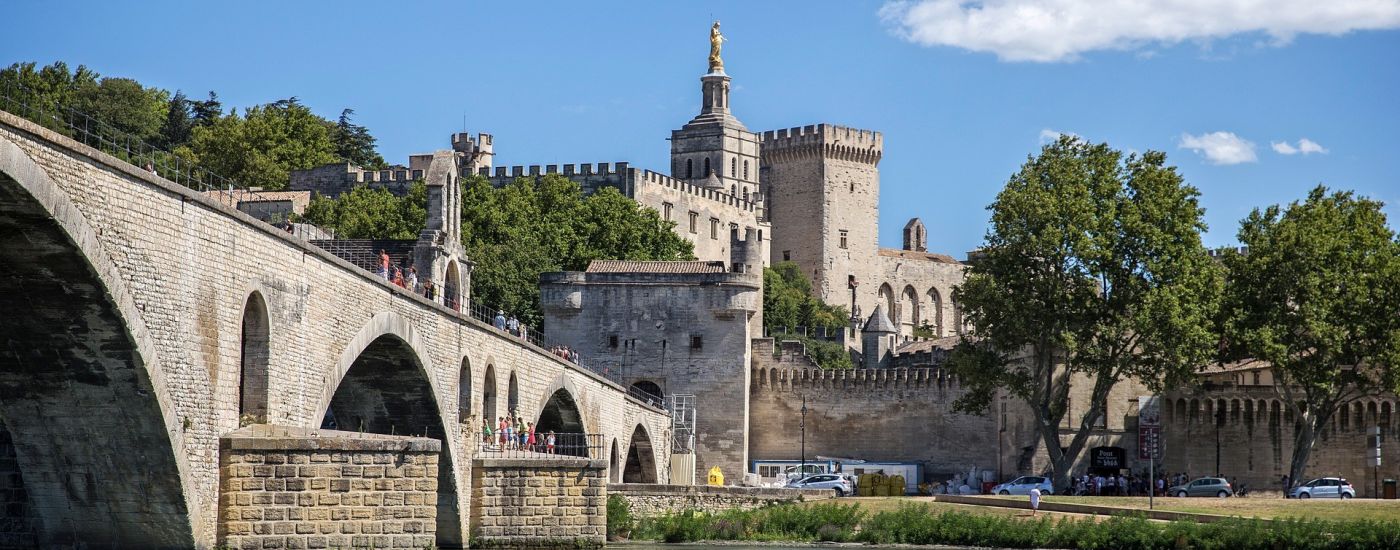Avignon is the prefecture of the Vaucluse department in the Provence-Alpes-Côte d'Azur region. It is located 100 km from Montpellier and can be reached in a one-and-a-half-hour train or car ride. Visit this historical city with fairy-tale castles and an historic centre and see the magic for yourself!
The settlement of the area of today's Avignon goes back to the Neolithic Age. The rocky hill protected the inhabitants of that time from enemies, but also from the floods of the Rhone, which regularly flooded the area. The city flourished under the Roman rule but lost importance in the 3rd century during Christianisation and the migration. In 1309 Avignon became the seat of the popes for almost seventy years and thus the capital of Christianity. It became a medieval intellectual, artistic and cultural centre in Europe and many of the important and magnificent monuments were made. Seven Roman popes and two counter-popes exercised their office from Avignon. After the Popes seat was back in Rome, Avignon suffered under the Huguenot war but regained its fortune after the French Revolution.
Things to see and do :
Palais des Papes: This is cited as an UNESCO world cultural heritage. The Pope's palace is located on the Rocher of the Cathedral. The largest Gothic building in the city looks like a fortress from the outside, but is like a castle on the inside. It was built between 1335 and 1352.
Pont Saint-Bénézet: It was built in the 12th century and is directly connected to the papal palace by a watchtower. For a long time, it was the only crossing over the Rhône, but it collapsed again and again during floods, until in 1669 it was finally decided not to rebuild the bridge after it was destroyed again. It is listed as an UNESCO world heritage site.
Cathédrale Notre Dame de Dom d’Avignon : It is located above the Pope's palace on. The main Romanesque building dates to the 12th century and was extended in the 14th century during the pontificate of John XXII. During the French Revolution, however, the cathedral was largely destroyed and turned into a prison.
Petit Palais: It is an UNESCO World Heritage and dates back to the 13th century. It was the residence for Avignon's episcopal bishops before Pope Clement V created the Palais des Papes. The building was designed as a Gothic fort. The Petit Palais is now an art museum with excellent collections
Food and Lifestyle: The medieval alleys and Renaissance villas, cafes and restaurants are a wonderful place for a stroll. Walk around town and take a look at La Place des Chataignes and La Place Pie. Try some of the regional specialities like the Papalines d'Avignon (confectionery producers must pass a special certification to make this famous dessert, 5 tons are produced yearly). The people from Avignon like sweet things as they are also very well known for their Nougat.

